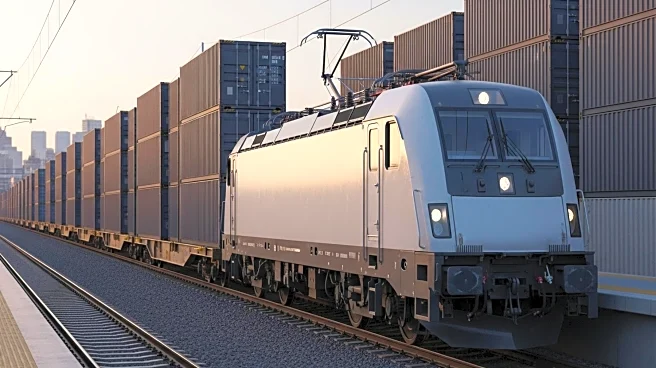What's Happening?
The Shippers Conditions Index (SCI), released by freight transportation consultancy FTR, has shown a slight improvement, although it remains in negative territory. The index, which aggregates market influences affecting the transport environment for shippers, recorded a score of -2.0 for July, an improvement from June's -2.6. Despite the improvement, the index indicates a less-than-ideal environment for shippers. Fuel costs continue to pose challenges, but freight dynamics have become more favorable, with rates reaching their most favorable levels since October 2024. The outlook for the SCI suggests a near-neutral position through most of 2026, although regulatory changes could lead to a more negative outlook.
Why It's Important?
The improvement in the Shippers Conditions Index is significant for the freight transportation industry, as it suggests a potential easing of unfavorable conditions for shippers. However, the market remains challenging due to factors such as high fuel costs and regulatory pressures. The tightening of trucking capacity, driven by revisions in payroll jobs data and new regulations affecting foreign nationals with commercial driver's licenses, could exacerbate these challenges. Additionally, record insurance premiums and a new 25% tariff on heavy trucks may hinder trucking companies' growth, impacting their ability to meet freight demand. These developments could lead to a hotter market for shippers once freight volumes recover.
What's Next?
Looking ahead, shippers may face increased market pressures as trucking capacity tightens further. The crackdown on foreign nationals holding commercial driver's licenses and scrutiny over English language skills could reduce the supply of drivers, while high insurance premiums and tariffs on heavy trucks may limit trucking companies' expansion capabilities. As freight demand recovers, shippers could encounter a more competitive and challenging market environment. Stakeholders in the freight transportation industry will need to navigate these regulatory and economic pressures to maintain operational efficiency and meet demand.
Beyond the Headlines
The ongoing regulatory changes and economic pressures in the freight transportation industry highlight broader implications for labor dynamics and international trade. The scrutiny over foreign nationals with commercial driver's licenses raises questions about workforce diversity and inclusion in the industry. Additionally, the tariffs on heavy trucks could impact international trade relations and the cost structure of transportation companies. These developments may prompt industry stakeholders to reassess their strategies and adapt to evolving regulatory landscapes.











